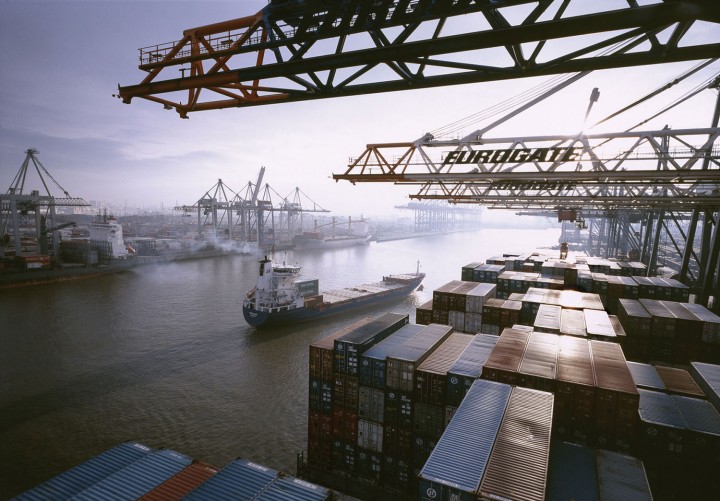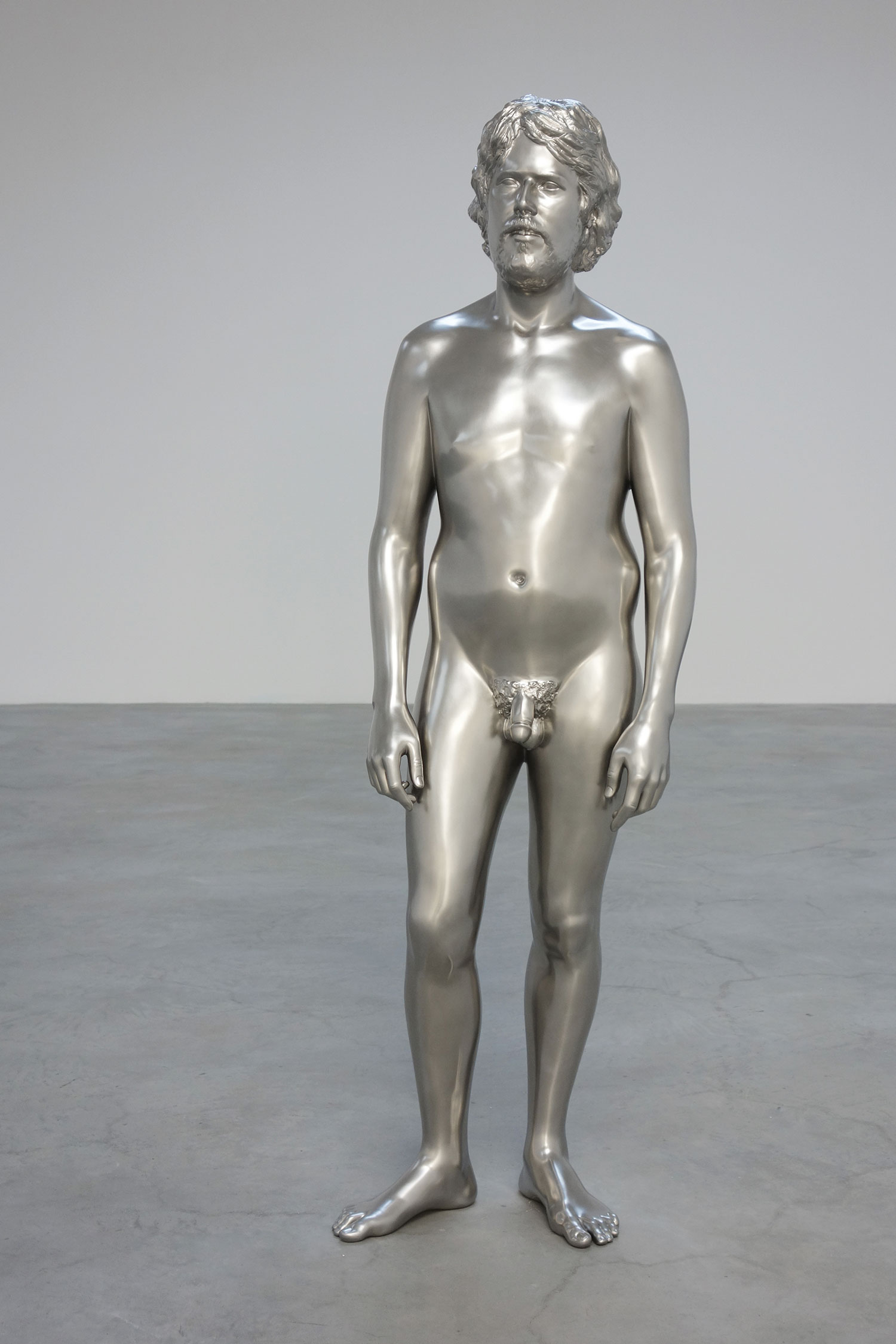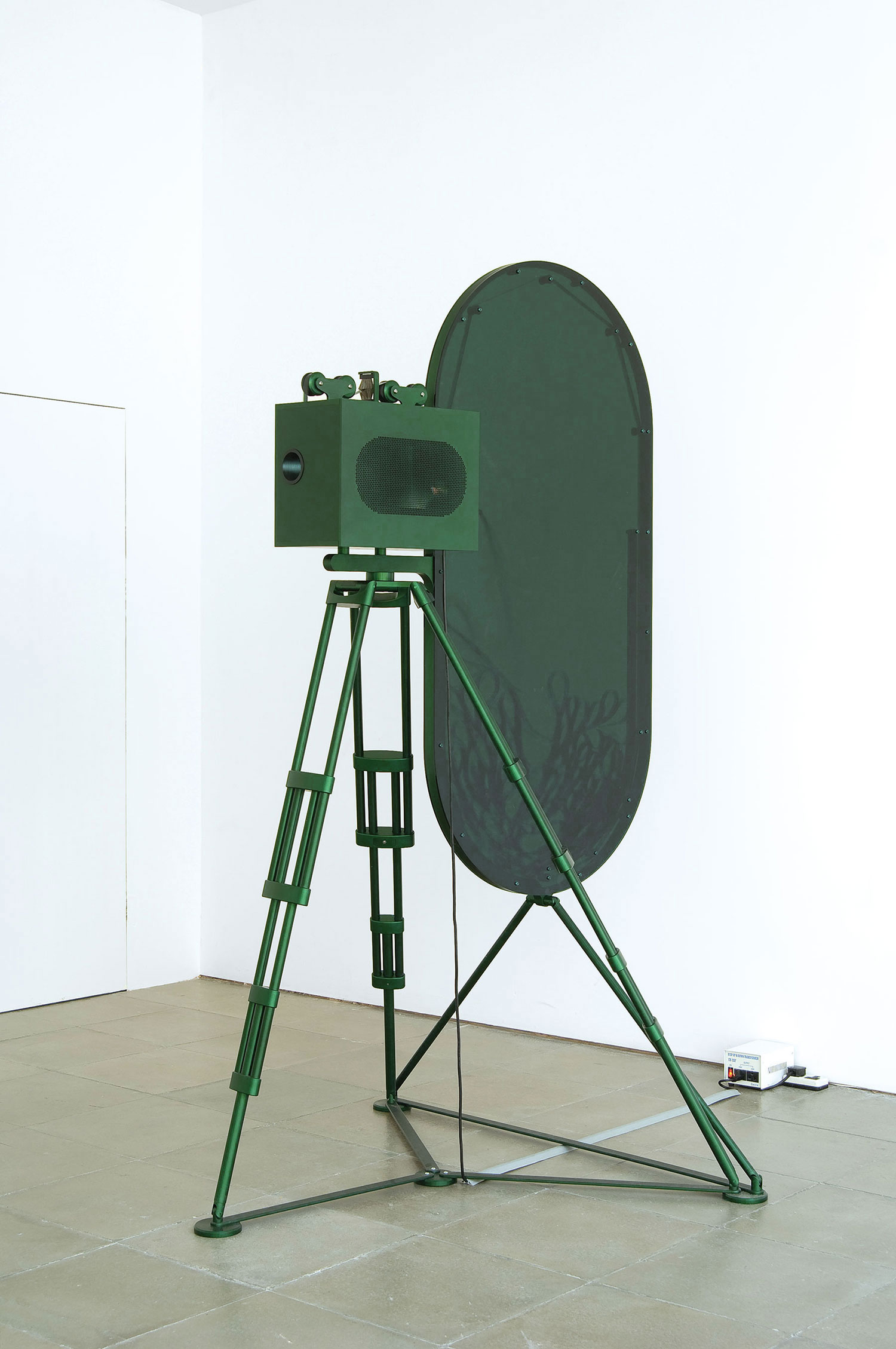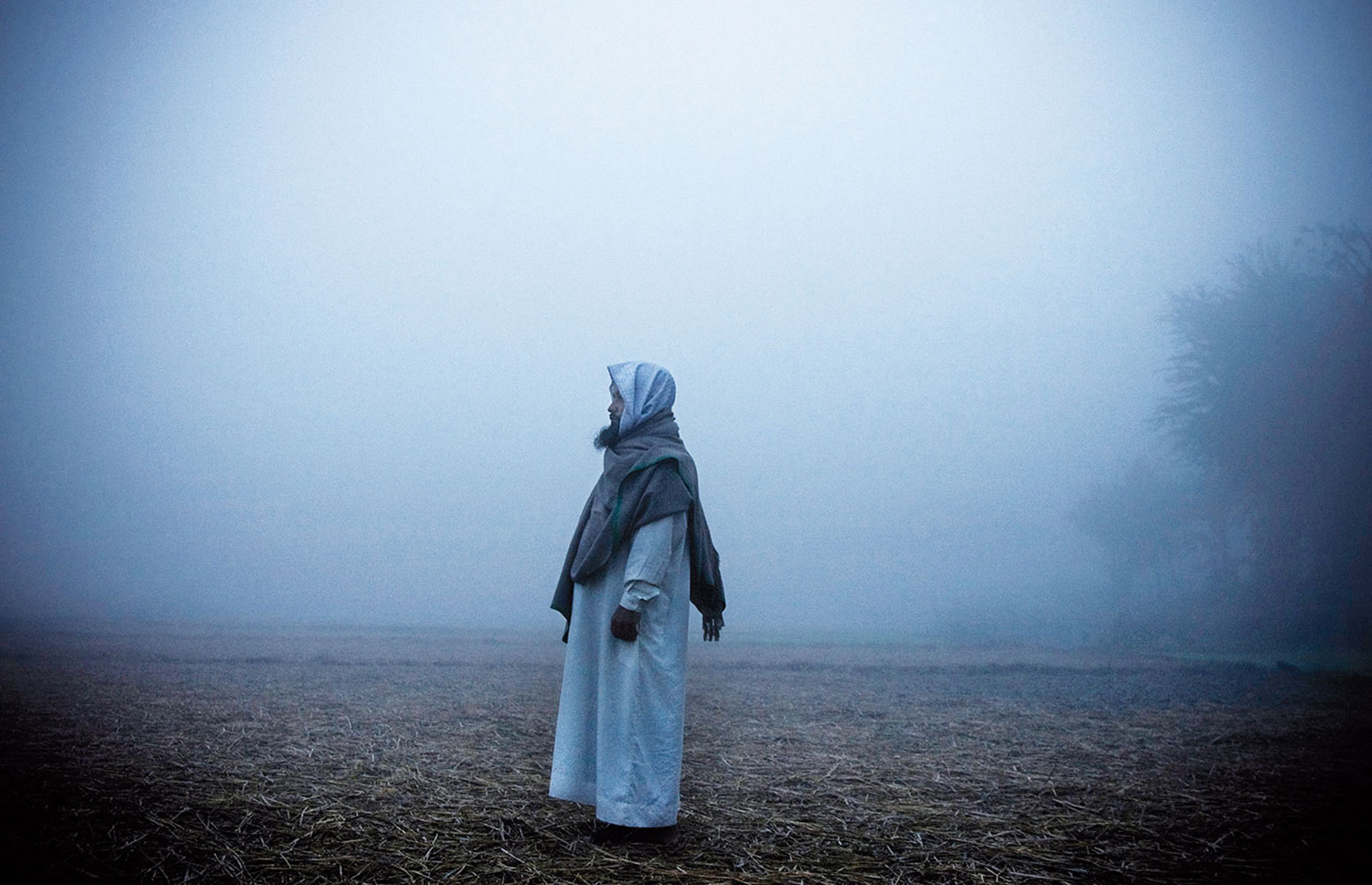
Documentary photography and video have played a significant role in the evolution of global contemporary art, opening a new dimension of artistic engagement with social and political change, and producing an aesthetic genre highly relevant to our age of media and communication. Differing from traditional journalistic photography and film, documentary works negotiate the moving boundaries between reality and imagination, reportage and critique. They also provide a new space in which contemporary art can reconnect with real life, serving as a site of resistance to the hegemony of established powers. At a time when “Occupy Wall Street!” is a rallying cry against the domination of neoliberal capitalism, the work of artists such as Allan Sekula and Bruno Serralongue has become especially relevant.
Hou Hanru: We are in a key moment again of rethinking the relationship between what we do and history, as pointed out by Alain Badiou in his latest book, Le Réveil de l’Histoire (2011). We are trying to answer the challenging question of the historical significance of the current revolutions around the world, from Arab countries to Europe to Wall Street. Bruno’s work has to do with the production of space, since he documents the process of making new nations like Kosovo and South Sudan. However, they are not really NationStates. They are nations without economy, without cultural identity, or with only a certain kind of cultural identity. This is more about drawing the territory rather than building a social structure. Allan has a similar understanding in terms of what territory means and what is happening in the forgotten territory that he shows in his film The Forgotten Space (2010). As artists, how do you document this process? The work is not simply about describing it in a superrealistic manner. In fact, it deals with the perspective of history. How do you understand your roles in such a complicated relation to current events and the historical perspective?
Bruno Serralongue: We could look at the examples of South Sudan and Kosovo, two nations built from the outside; they are United Nations nations, productions of the United States and European Union. They tried to make a country following those same rules for organizing the border and turning the population into new citizens. In addition, the emigrants are expected to come home. It’s the same for Kosovo, because Kosovo is a country without economies. All of the economies are outside the border. With the European Union, it feels that if we stabilize the country with the military and we try to implement a kind of economic growth, people will come back soon, maybe in five or six years. But I think it will never work like this.
HH: It is also an interesting question of belonging and how history actually reorganizes the sense of belonging. For example, we can compare it with the case of Palestine and the right of return; it has been one of the key reasons for the conflict in the region. In terms of the ocean, people are sailing on boats that use the flag of convenience, as you have pointed out in your work, Allan. The ships all belong to multinational companies, and the crews are coming from different countries.
Allan Sekula: Global maritime regimes are full of contradictions. The doctrine of freedom of the seas dates back to the early 17th century. The Portuguese and the Dutch were in conflict over the seas around what is now Indonesia and New Guinea. The Portuguese were trying to claim proprietary rights to sea routes approaching trading ports and the Dutch were arguing that the sea is an open highway for all parties. They were the original freetraders. That established one of the key principles of maritime law: the open sea is beyond sovereignty. This allows sovereignty to creep back into the picture in myriad ways, many of them duplicitous, most semifictional or notional. For example, Greek shipowners register their vessels in Panama or Liberia and thus avoid Greek taxes altogether, which has no small impact on the health of the Greek economy. Today the United States is the dominant naval power in the world, by a long stretch. It claims to be the guarantor of freedom of the seas. This has no legal basis whatsoever, and in fact the principle is selectively applied: the US Navy has no interest in taking the leading role in the campaign against Somali pirates. But when it is geostrategically useful to try to build a coalition of smaller south Asian states over threatened Chinese encroachment in the South China Sea the doctrine is given full voice. The ironies of this situation are multiple; not least is the fact that Chinese recycling of its dollar surplus into US Treasury notes keeps the deficit funded US Navy afloat. No Hollywood director wants to make a film in which an American carrier battle group attacks Chinese cargo ships carrying toys and toasters to the WalMarts of American suburbia, but that is one absurdity of the scenario being imagined.

HH: As an artist, how did you decide to be involved with this situation? You started working very early with the question of global economy.
AS: I started doing more and more work about global economic questions in the early ’80s. My work was always about economic questions; without simplifying too much, I would say all my work since the early ’70s—certainly since Aerospace Folktales (1973) — has been about the demise of the postwar economic boom. My earliest works date from roughly the year 1971 — when Nixon withdrew the dollar from gold convertibility, ending the Bretton Woods Agreement that had governed the postwar international currency system, and opening the door to greater international financial speculation and to an increasingly fictional and volatile role for the dollar as the standard of international exchange. The cold war antagonism between the Soviet bloc and the United States and its allies fueled a military-Keynesian prosperity that benefited California enormously, mak- ing the University of California, for example, one of the world’s exemplary public universi- ties. I was a product of that system, but by the time I finished as a student the sense of prosperity was already crumbling.
HH: As Bruno has said, there’s a difference between a journalist and an artist when facing the same events, the same news in the newspaper. My question is at which moment can one actually say one is an artist? And is this distinction really important?
AS: I often don’t tell people I’m an artist. I’ll say I’m a photographer, a filmmaker, or a writer. In the Anglosaxon world, people often regard artists as charlatans. Maybe this is less true in France, as there is still a strong artisanal culture in France and a respect for artists. But that’s a side point. The main point is that I don’t want to judge journalism by the standard product of the apparatus, which is degraded with the decline of print journalism but which is also opening up with the rise of Internetbased communications. With journalists the sense of form is secondary. But with artists, those questions are primary, and so we can alter the standard relations of image and text.
BS: Yes, to be antiphotojournalism is not to be against journalism; it is trying to find a new way of speaking of the same subject but following a different method. Maybe because you follow a different method, you can give different information on the subject.
HH: Yes, that might change the essential aspect of your position.
AS: I remember during the 2000 Democratic Convention, in Los Angeles, there was a lot of heavy stuff with the police on the streets. It was one year after Seattle, so they were really trying to control the situation. There was a very funny demonstration one night on Santa Monica Pier where a bunch of right-wing Democrats held a fundraising party. They had maybe five different police departments there to keep the protesters away. I was photographing it with fast, pushed film and trying to work with the crazy mixed light of the nighttime pier. It was great because you had these police horses on the pier and there was horseshit everywhere and all these women coming to the party with high heels were walking through the horseshit. That was the most fascinating thing about it. But there were maybe five or six kids who looked like Black Bloc anarchists with masks on. Of course, all these journalists were just on top of them, waiting for some gesture of violence. I was busy photographing the high heels and the horseshit and trying to get the light right. In the middle of this, I bumped into Gilles Peress from Magnum, who was also uninterested in the Black Bloc kids, and he said, “Oh, you don’t have a flash. I can’t afford not to have a flash.” At that point, I think he was doing a series for Vanity Fair, and he knew he would get one page, and it was better to get the one good image than to miss it.
BS: We know that press photographers have maybe one page in a magazine. It’s one photo, maximum two. So they are always chasing the most spectacular image. And for us, we work more in a sequence or série. It is totally different.
HH: So it’s the narrative that involves more contextual information and also that creates a space or distance of suspicion or suspense, or even critique, in that sense.
AS: But someone like Gilles, who is working at an intelligent level, is also able, with certain bodies of his work, in his books for example, to develop that same kind of context that we are talking about. The history of modernism is the history of a certain snobbish way of looking down at realism, and realism is what marks you as a “mere” journalist. But we know all too well that there is poetic play within realist language. With documentary photography we should be open to a variety of different visual styles that can be emulated or appropriated within a broader or bigger context to make complex works.
HH: And do you think that exhibitions somehow serve as a kind of articulation, an intensified moment to display all these different kinds of forms? Yesterday, Bruno was talking about exhibition as a place where a difference from journalism emerges.
BS: It is not only a place to display a photo in the room. It is about how you perceive it, how the spectator looks at an image. Looking at an image on the wall is totally different from how you look at it in the press, a newspaper, or a magazine. I definitely think the exhibition space is very important to understand the work in a specific way.
HH: In the process of photographing and filming, do you have much interaction with the subject, the workers on the boat in Allan’s case and the people surrounding the events in Bruno’s case?
AS: Without those people you don’t have an image. Without some interaction with them and some way of communicating, you don’t have the image. The image is always the outcome of relations between subjects: even a depopulated landscape is intersubjective. It strikes me in my portraits of the crew of the ship that the friendliness and the way they project themselves to me has something to do with the fact that I got to know them all over the weeks of being on the ship. I would not have gotten the same openness and edge of humor. What does it mean that I am calling this The Ship of Fools? Are these people fools? There is a longstanding joke among seafarers that you have to be a fool to go to sea. And there is a specific literary lineage here: Sebastian Brant’s book, Das Narrenschiff [The Ship of Fools (1494)], influenced Erasmus when he wrote his famous text dedicated to Thomas More, In Praise of Folly. (1509). And the role of folly in human creativity and critical resistance to dogma and doctrinal frozenness is very important. The projects that seem most quixotic are often pregnant with the future. They are in on the joke, and that spirit is something I wanted to get.
BS: For me as well. This relation is crucial. It’s probably the biggest difference between the way I work and how a photojournalist works. I arrive somewhere, like in Kosovo or in South Sudan, and I don’t know exactly what I can photograph because I don’t have a special permit. When a photojournalist arrives somewhere, he knows what he wants to photograph more or less. I am more open. So the relations with people I meet are extremely important. It gives me different possibilities to explore the subject.





